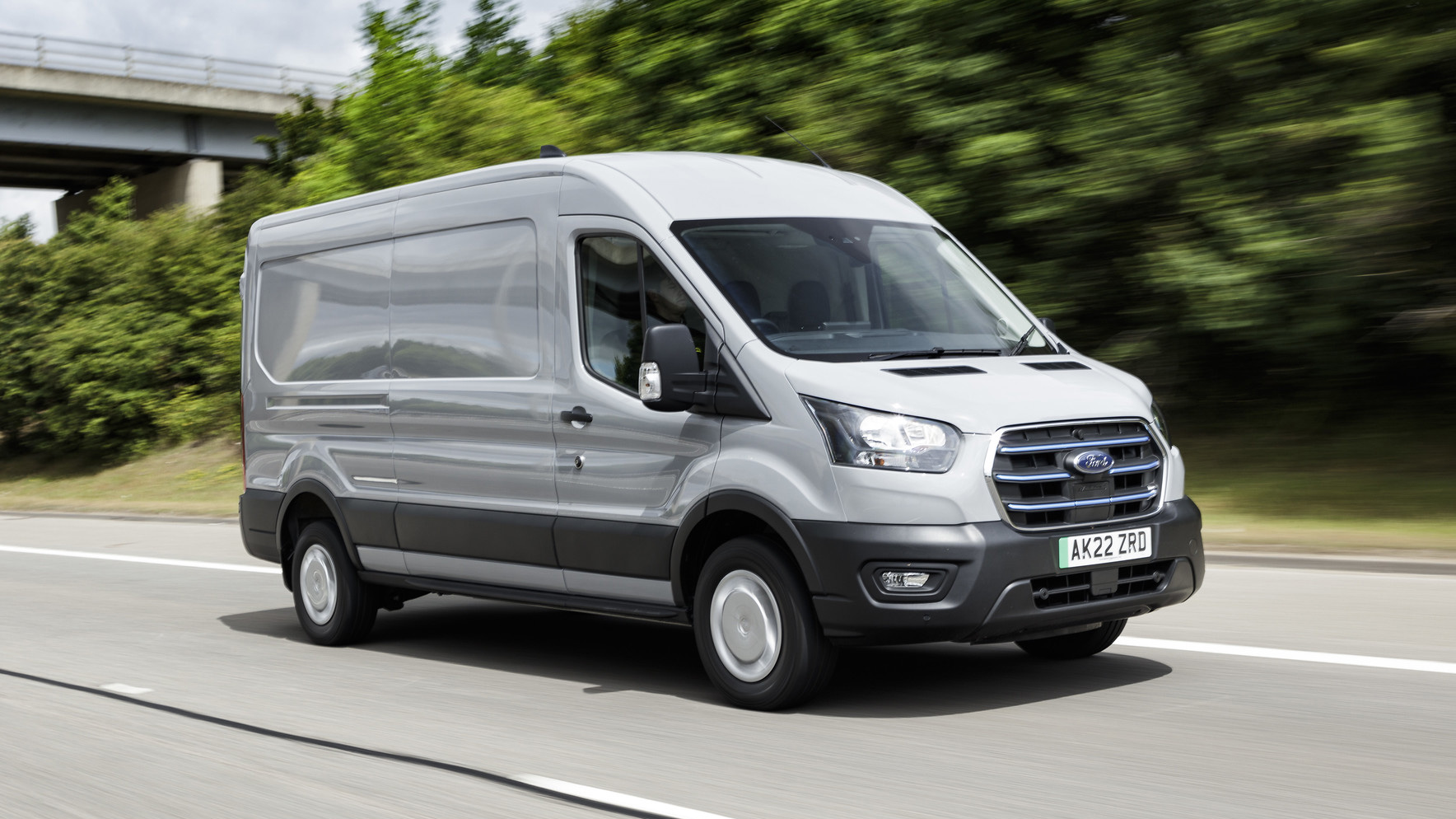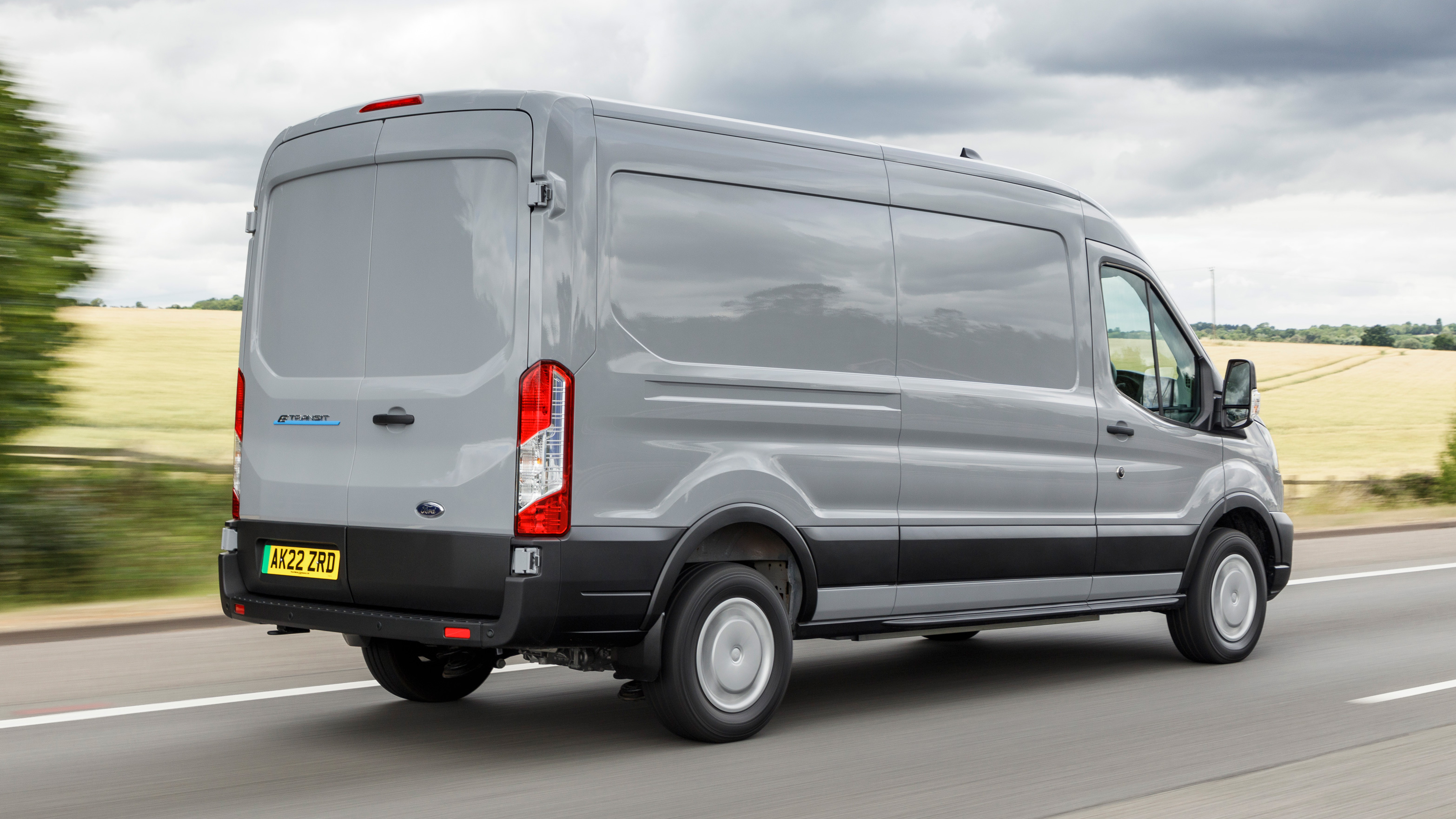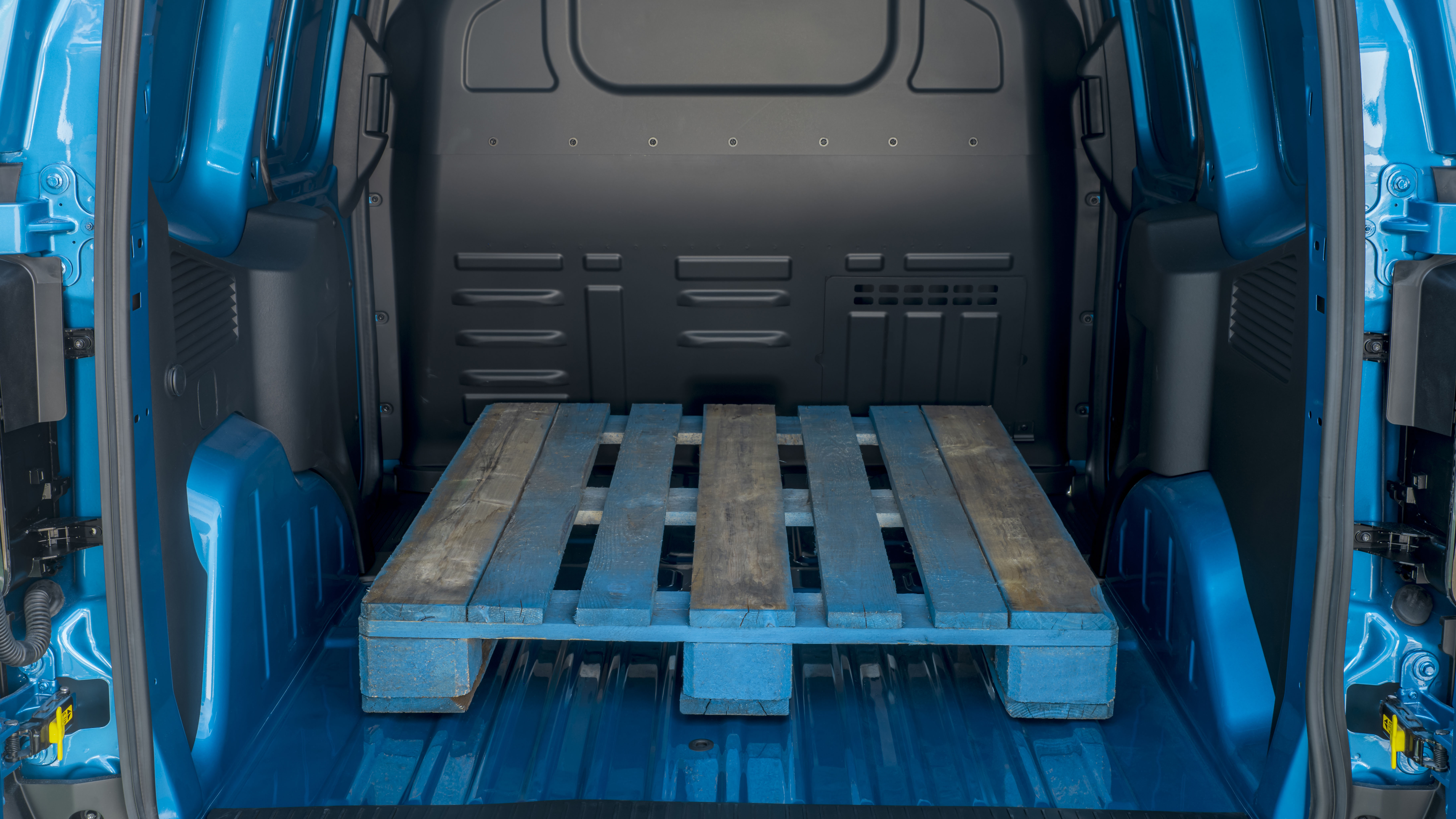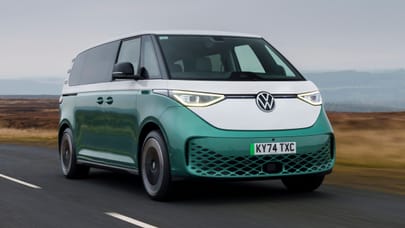
Ford e-Transit review
Good stuff
Usable range, lovely to drive (for a van), exceptional support for fleet life
Bad stuff
Range depends heavily on what you need to move, it's only really cost effective if you can charge at home (or at the depot)
Overview
What is it?
The Ford Transit has been around in many guises since it was first introduced in 1965, but each one of them has essentially been a large space enclosed in a steel body, propelled by whatever form of petrol or diesel engine was popular at the time. This van has been the ubiquitous background decoration of modern Britain for decades, but the introduction of the electric version in 2020 was probably its most radical change yet.
How so?
There are those who think if it’s not diesel, it isn't a working vehicle, citing range and flexibility over everything. Until recently they might've had a point: some of the big stuff was rolling into the party with real-world range of 80-ish miles and an eye-watering list price. Which meant very, very long-term payback strategies and that your ‘real world’ had to be 'really local'. With access to lots of convenient charging.
That's no longer the case, and you've now got a variety of proper full-size electric vans pushing 200+ miles of range. Think Renault Master E-Tech and Fiat E-Ducato, or (if you're flush with cash) there's the Mercedes-Benz eSprinter. From China, we've seen a lot of SAIC-owned Maxus eDeliver 9s out and about.
Hold on, don't electric Transits come in all shapes and sizes these days?
Yup. Smallest (and the smartest looking) of the bunch is the e-Transit Courier, which starts from £27,000 excluding VAT. It’s targeted at small businesses, delivery drivers, anyone who needs a little runabout with a big (ish) loadspace for getting around cities. Underneath it gets a 134bhp electric motor mated to a 43kWh (usable battery) for up to 181 miles. Which, says Ford, meets the requirements of 86 per cent of its compact van customers. A moment of silence if you're in the leftover 14 per cent still.
The Transit Connect doesn’t get a fully electric option (though there is a PHEV version), so next up is the e-Transit Custom, your classic mid-size van, which starts at just under £45,000 excluding VAT. It’s available with three, five or six seats in varying lengths, while under the bonnet you get the choice of 134bhp or 215bhp electric motors, both paired with a 64kWh battery for a maximum 204 miles of e-range.
Alternatively there’s the schporty MS-RT version, which ups the ante with 281bhp but a significantly reduced e-range, and asks for around £20k extra in change. Yikes.
Not shortage of rivals either, with the e-Transit Courier facing off against the likes of the Citroen e-Berlingo, Fiat e-Doblo, Peugeot e-Partner, Toyota Proace City Electric or Vauxhall Combo Electric from within the Stellantis megacorp alone, all of which share the same electric gubbins (113bhp, 50kWh battery, 213 miles e-range). There’s also the Renault e-Trafic to consider, and the LEVC VN5 is well worth a look too.
Squaring up to the e-Transit Custom is Volkswagen’s Transporter, its biggest rival, which is fundamentally the same car in disguise and gets identical electric gubbins beneath. Otherwise again from within the Stellantis camp you’ve got the identically underpinned Citroen e-Dispatch, Peugeot e-Expert, Fiat e-Scudo, Vauxhall Vivaro Electric and Toyota Proace Electric. A slightly posher option is the Mercedes-Benz eVito. Supplying a boutique outfitters in Pall Mall? How about an ID. Buzz Cargo?
My head hurts from all that. And we've not even got to the big boy...
Well remembered. The Ford e-Transit starts from £52,599, some 10 grand more than a diesel Transit, excluding VAT, and comes in all the usual variations of the standard vehicle. So you can mix and match three lengths and two heights, and then there’s a bare chassis cab for glueing specialist equipment onto, like tipper bodies, mobile workshops, cranes and the like. There’s a crew cab version for moving bodies and gear, and the only thing that marks it out as being electric is the lack of noise and some blue bits on the grille. It’s not a huge psychological transition for the user.
There are two available battery sizes – 68kWh or 89kWh – mounted low under the floor, with the motor stuffed between the rear axle, so yes, the e-Transit is rear-wheel drive. For which we rejoice for no specific reason. There’s new independent and heavy duty rear suspension too, so it rides better than the live-axle and leaf-sprung stuff.
In theory (and depending on which version you’ve got, obviously) you can get up to 249 miles of WLTP range (196 with the smaller battery). So the e-Transit should have plenty of spare capacity to cope with what businesses need to do, although we'd fully expect an e-Transit filled with bags of cement in winter to do considerably less. There’s between nine-and-a-half and just over 15 cubic metres of loadspace available from the panel van, by the way. In case that’s relevant.
Why would I want to switch to electric?
Well, it probably doesn’t help in the first place that the UK government keeps tweaking the goalposts with the grants, with manufacturers like Ford trying to hit a moving target. Very broadly, small e-vans can get up to £2.5k off the new price, and the larger stuff gets £5k off, but you’re limited to 1,000 vehicles. That’s not a problem for Dave’s Plumbing (other Daves are available), but if you’re DPD or Amazon with fleets in the tens of thousands, it makes a big difference.
But the fact remains that electric delivery vans are absolutely suited to their use cases in the main. They’re quiet – no dieselly idling during stops – they’re easy to operate and monitor, they produce no local emissions, they can slip into low-emission zones without charge and they generally end up at a depot at night for cost-effective refuelling.
Start to do the sums, and even though they cost a bit initially, the TCO or ‘total cost of ownership’ over a period with a properly set up fleet can start to look very attractive. If electric is to make sense, then delivery stuff that has a set usage profile and tends to be bombing around within a 150-mile a day boundary is a cracking place to start.
This makes sense. Am I really on TG.com?
To be honest, it’s a bit of a no-brainer. Where fossil fuels are at their least efficient – stop/start traffic and in town – electric is in its element.
There’s also a lot to be said for the general ease-of-use: the cab feels more like a nicely specced car, and given the general quiet and torquey electric motor you can imagine delivery drivers scrapping over who gets the e-Transit rather than the diesel. Especially when there’s a full day's work ahead.
Does the e-Transit make financial sense?
The big initial purchase price is softened somewhat by the electric one being 40 per cent cheaper to service, way cheaper to run on electricity per mile and likely chunkier figures on the residual side.
Looking at the full-sized e-Transit here, which gets the biggest batteries of the lot, if you take advantage of off-peak home (or depot) tariffs starting at under 10p per kWh, it's around £6-8 to charge. That's the kind of pocket change you'll find under the seats most days anyway. And considerably cheaper than a full tank of diesel.
But rely on fast public points, which typically cost at least 50p per kilowatt-hour (and then some), and you're looking at five times the price. Minimum.
There’s also an eight-year/100k-mile battery warranty on the e-Transit, so Ford isn’t overly worried by battery issues. Is anyone these days? That myth has long been busted.
But probably of equal significance is Ford ramping up its ‘Ford Pro’ ecosystem, which aggregates everything from buying the actual vehicle to financing, sorting out the monitoring and telematics software for individual businesses and servicing. Ford will help you set up a charging hub, look at your infrastructure, and recommend how to work out strategy. If you’re a fleet manager, that’s invaluable as you try and green up your fleet. Boring for the rest of us, though.
What's the verdict?
The Ford e-Transit feels adaptable, practical and eminently fit for purpose, but more to the point it’s comfy, well equipped and a joy to spend time in compared with other LCVs – albeit we’re basing far too much of our experience on teenage Transit diesels.
If you ally that with the Ford Pro scheme, it starts to make all kinds of sense. Shouldn’t all the shorter range (and by that we mean vehicles not bombing up and down the motorway network) and multi-drop carriers be electric? If the numbers stack up, then yes. And the e-Transit is currently one of the very best of the breed.









